The history of Rossiya Segodnya International Media Group stretches back 80 years
Founded on June 24, 1941 with the creation of the legendary Sovinformburo, its successors include the Novosti Press Agency, RIA Novosti, and presently Rossiya Segodnya, which have covered the major developments in the country and represented it on the world stage throughout the decades.
“From the Soviet Information Bureau.” These words, intoned by the inimitable voice of Yury Levitan, became a defining symbol of the Great Patriotic War. In the darkest days of the war, updates from the front inspired faith in the citizens of the Soviet Union and anti-fascists around the world that victory was near.
Sovinformburo was created two days after the war broke out to provide real-time coverage of news from the frontlines. In addition to overseeing the work of war correspondents, it provided information support to Soviet embassies and consulates, foreign radio broadcasting corporations and radio stations, telegraph and newspaper agencies, societies of friends of the Soviet Union, as well as various newspapers and magazines.
About 80 writers, journalists, correspondents and contributors from all walks of life worked at Sovinformburo during the war. Its literary group included Vera Inber, Valentin Kataev, Yevgeny Petrov, Boris Polevoy, Konstantin Simonov, Nikolai Tikhonov, Alexei Tolstoy, Alexander Fadeyev, Konstantin Fedin, Kornei Chukovsky, Mikhail Sholokhov and Ilya Erenburg, to name a few. Ehrenburg’s role was particularly important. During the war, he wrote over 300 articles for Sofinformburo, which invariably captivated the public both in the Soviet Union and the West.
The Soviet Information Bureau’s duties included compiling and publishing summaries based on the materials provided by the High Command General Headquarters and updating international audiences on developments at the Soviet-German front and the home front. Sovinformburo started issuing operations reports daily beginning on June 25, 1941.
In 1946, the number of staff at Sovinformburo grew to 370 people. When the war ended, the agency shifted its focus to covering Soviet domestic and foreign policy and events in the people’s democracies. Representative offices were established in foreign countries to support Sovinformburo’s mission of publishing writing on life in the Soviet Union.
In 1953, Sovinformburo became the Main Directorate of the USSR Ministry of Culture, and was folded into the State Committee for Cultural Relations with Foreign Countries under the USSR Council of Ministers in March 1957.
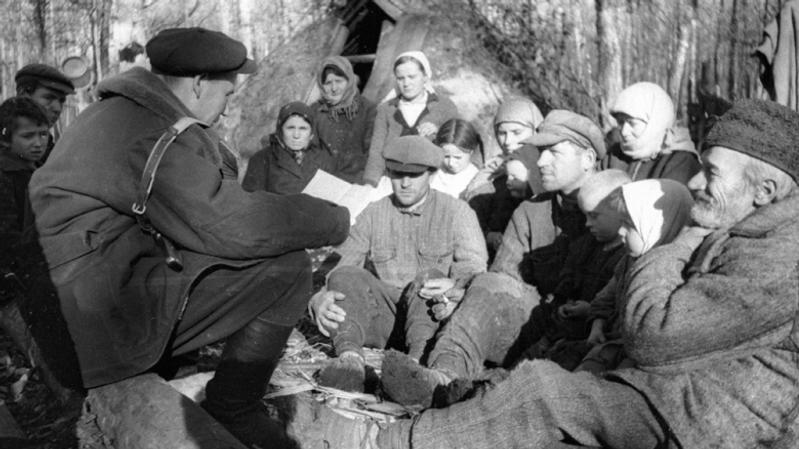
Partisans listening to a Sovinformburo report. 1942
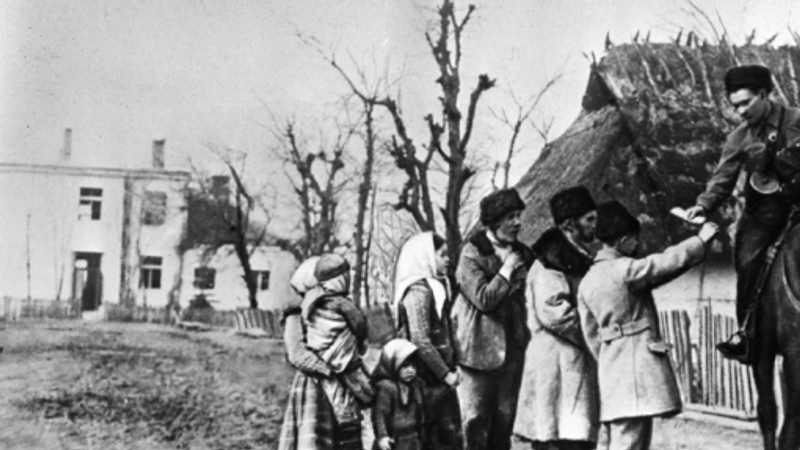
Partisans bring a Sovinformburo report to residents of the village of Antonovo. 1943
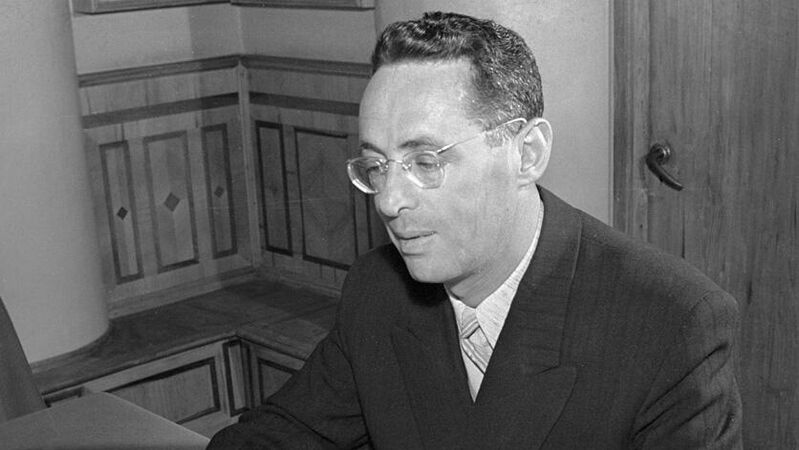
People's Artist of the USSR Yuri Levitan (1914-1983).
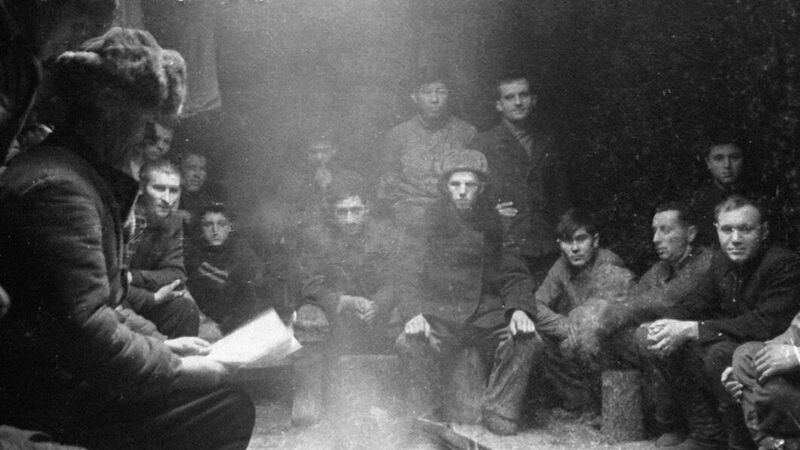
Dmitry Medvedev (left), commander of a partisan group, reading a Sovinformburo news report. 1943
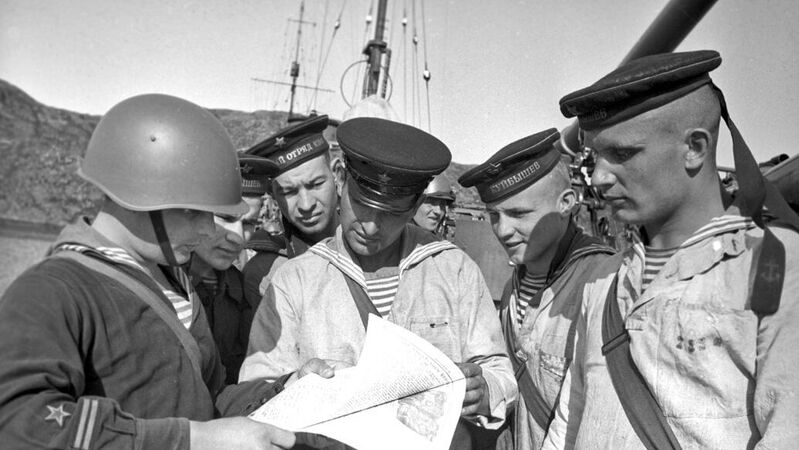
The Great Patriotic War of 1941-1945. Sailors from a Soviet ship reading the latest newspaper with a Sovinformburo report, 1941. Photo by Emmanuil Yevzerikhin.
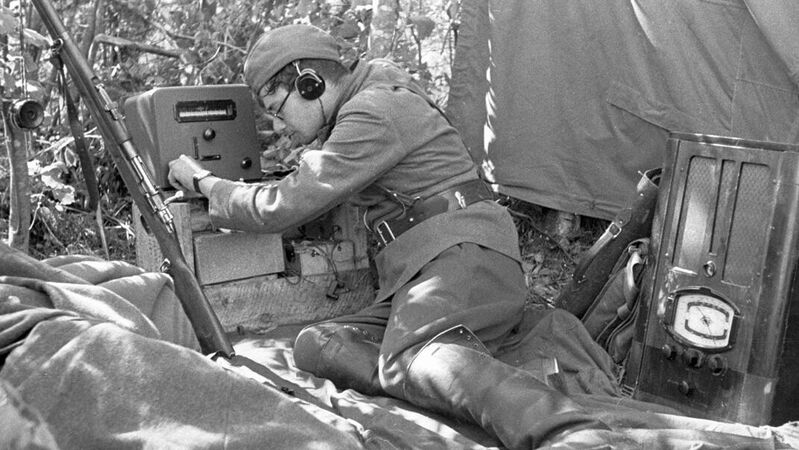
A radio operator receiving news from the Soviet Information Bureau. 1942
The Soviet Information Bureau was reorganized as the Novosti Press Agency (APN) by a resolution of the Central Committee of the CPSU of January 5, 1961, and rapidly established itself as the premier news and information agency covering events in the Soviet Union and reporting on life in the rest of the world for domestic audiences.
APN offices operated in over 120 countries around the world, with a focus on expanding international ties and promoting a positive image of the Soviet Union abroad through all available formats: radio, television, cinema, newspapers, magazines, and digests.
The APN photo service produced at least 120,000 stories a year. Periodicals included 60 titles and were published in 45 countries with a circulation of over 4 million copies per issue.
The agency published bulletins covering a wide range of topics, such as Science and Technology, Culture and Arts, Sports, Youth: Life and Problems, and International Information. There was also a daily digest of the Soviet press in English titled Daily Review. Every year, APN published 200 books and brochures with a total circulation of about 20 million copies.
APN published its Sputnik magazine in Russian, English, French, Spanish, German, Czech and Hungarian. The last few pages of each issue offered foreign readers Russian language lessons, fairy tales and recipes of the peoples of the USSR. Many of the writers who worked on this digest went on to become household names.
The agency’s creative team included over 7,000 people, both seasoned journalists and those taking their first steps in the profession. Renowned journalists like Genrikh Borovik, Vladimir Simonov, Valentin Falin, Vladimir Pozner, Alexei Volin, Vladimir Molchanov, Nikolai Yefimov, and Vitaly Tretyakov, to name a few, contributed to APN.
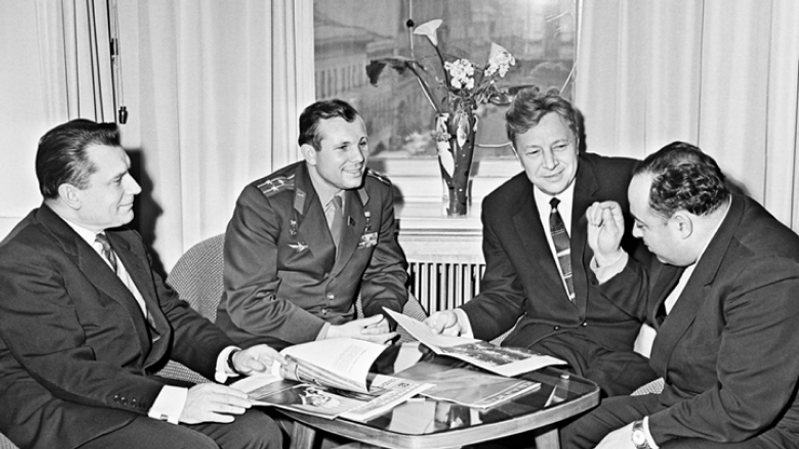
The Novosti Press Agency's directors Spartak Beglov (first left), Boris Burkov (second right) and Boris Pishchik showing Pilot Cosmonaut Yuri Gagarin the agency's foreign publications on Soviet space achievements. 1964
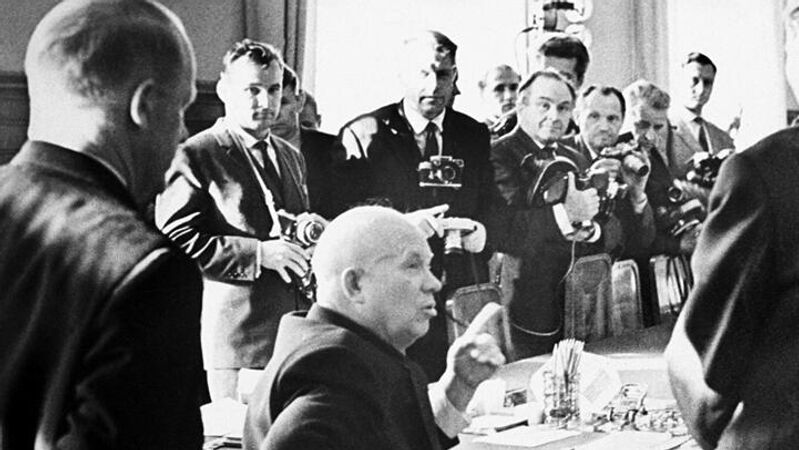
Valery Shustov (first left in the photographers' row), a Novosti Press Agency news photographer, in the office of the First Secretary of the CPSU Central Committee Nikita Khrushchev in the Kremlin. 1960s.
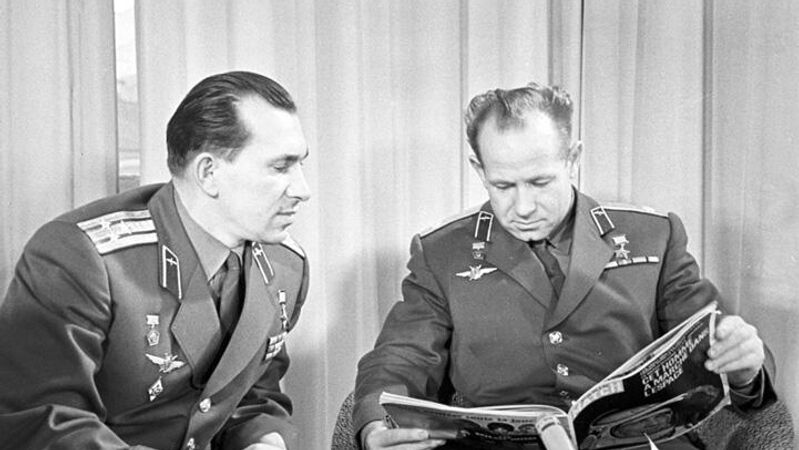
Soviet pilot-cosmonauts, Voskhod-2 spacecraft crew members, Heroes of the Soviet Union Colonel Pavel Belyayev and Lieutenant Colonel Alexei Leonov at the Novosti Press Agency. 1965
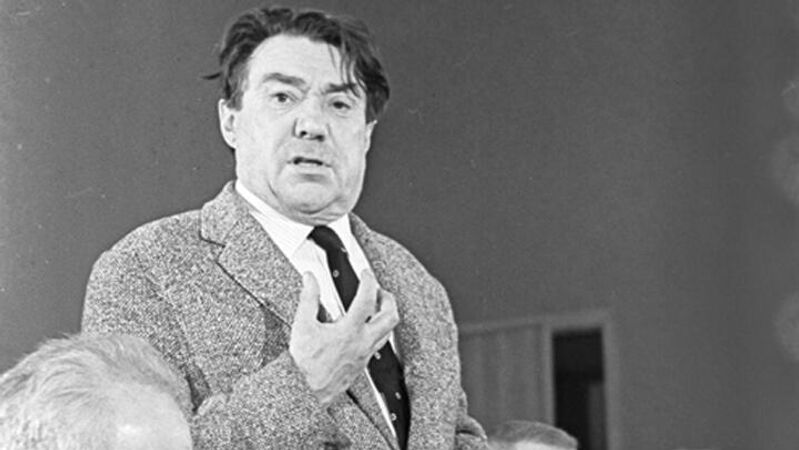
Writer Boris Polevoi taking part in a roundtable discussion dedicated to the 20th anniversary of the Nuremberg Trials. Novosti Press Agency. 1965
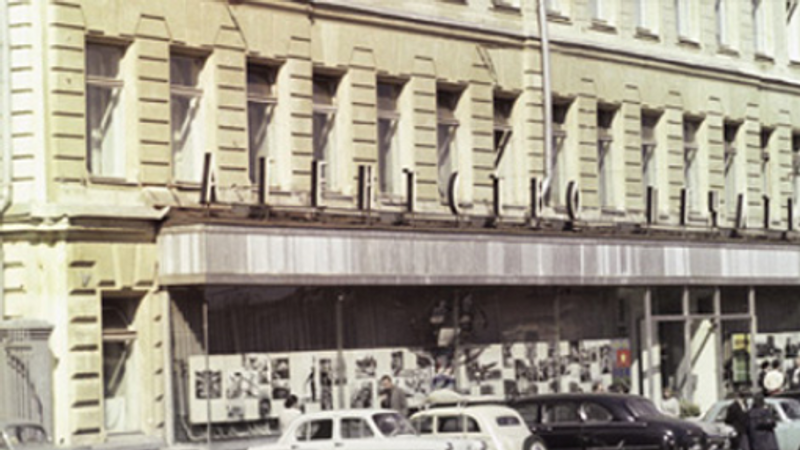
The Novosti Press Agency was located at 5 StrastnoiBoulevard before the 1980 Olympics. On the eve of the Games the agency staff moved into the new building, the headquarters of the Olympics at 4 Zubovsky Boulevard. 1966
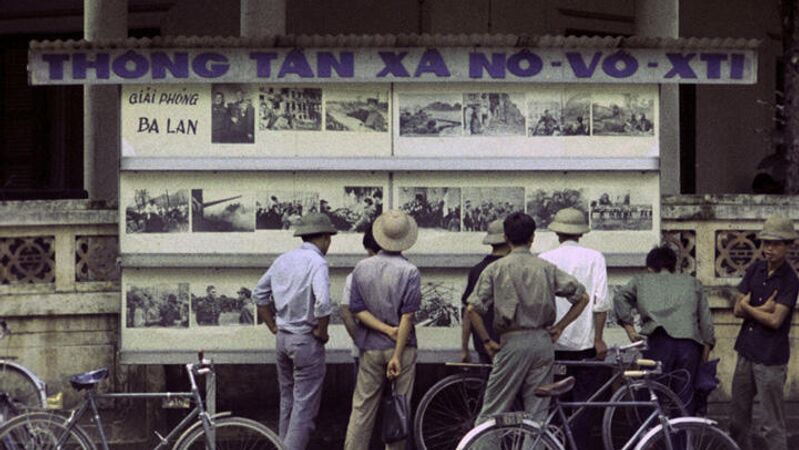
Hanoi residents at the APN display stand. 1969
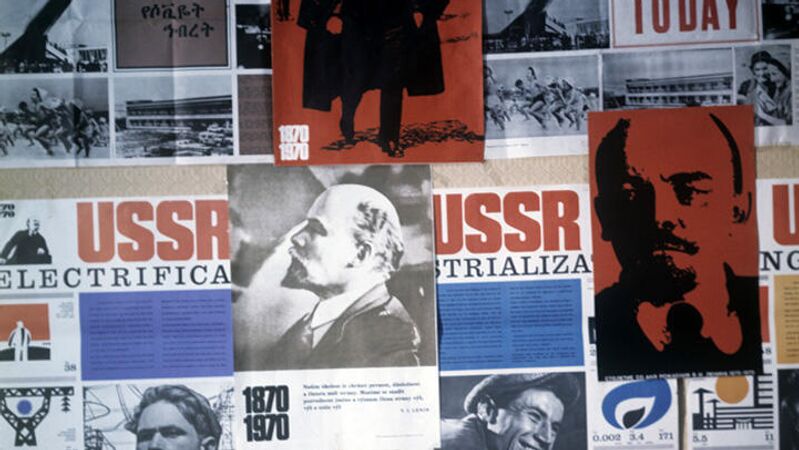
Covers of Novosti Press Agency (APN) publications brought out for the 100th birthday anniversary of Vladimir Lenin. 1970
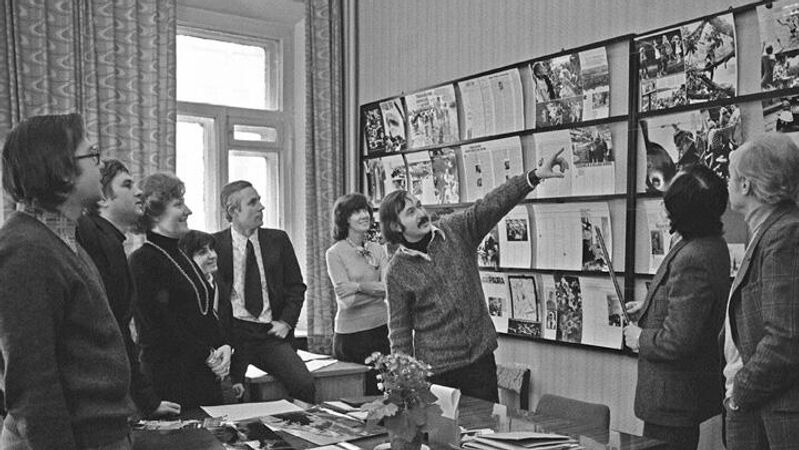
Novosti Press Agency (APN) periodicals editorial board. The North America department discussing a Soviet Life magazine make-up. 1979
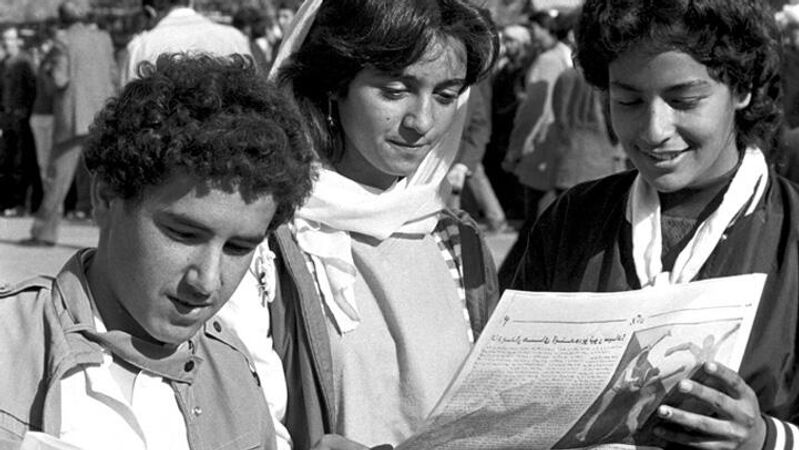
Young people from Kabul with a copy of the Javanan (Youth) newspaper published by the Novosti Press Agency office in Kabul. 1987
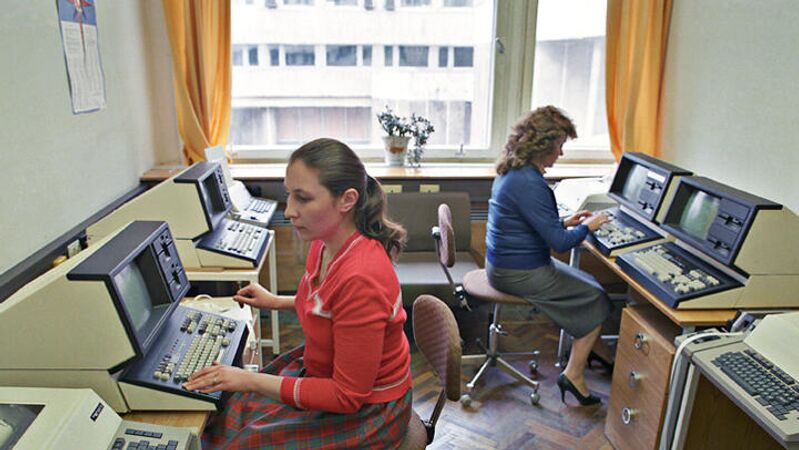
Novosti Press Agency (APN). Telegraph communications department. Processing materials on visual display units. 1987
On July 27, 1990, President of the USSR Mikhail Gorbachev issued the executive order “On the Establishment of the Information Agency Novosti”, reorganizing the APN as the Information Agency Novosti (IAN). The successor agency’s objectives remained the same, including preparing and distributing print, television and radio materials in the Soviet Union and beyond; and studying public opinion, both at home and abroad, on Soviet foreign and domestic policy. A computer data bank was created, which initially contained over 250,000 documents. The InfoNovosti newswire was first published in 1991.
In September 1991, IAN and the Russian News Agency merged to become Russian Information Agency Novosti (RIA Novosti) operating through nearly 80 foreign bureaus and correspondent offices, with over 1,500 media subscribers in the CIS countries and about 100 internationally. Under the executive order issued by the President of the Russian Federation on September 15, 1993 “On the Russian Information Agency Novosti,” RIA Novosti became a state news and analysis agency. In 1996, RIA Novosti’s radio channel, RIA-Radio, was launched. The Kultura TV channel, formerly known as the RIA TV channel, debuted in August 1997, concurrently with the founding of the All-Russia State Television and Radio Broadcasting Company (VGTRK).
In May 1998, under the presidential executive order “On Improving the Work of the State Electronic Media,” the VGTRK information holding was formed, which included RIA Novosti under the new name of the Russian Information Agency Vesti, which still retained the popular RIA Novosti brand.
In April 2004, the agency was renamed the Federal State Unitary Enterprise Russian International Information Agency “RIA Novosti.”
RIA Novosti has been a fixture of the modern history of Russian media, helping to pioneer innovative approaches to journalism and new formats for delivering content, and expanding the range of multimedia platforms.
RIA Novosti was named the national host agency and photo pool for the 2014 Winter Olympic Games in Sochi, making it the first Russian media outlet ever to be awarded that status.
Currently, the RIA Novosti information agency and the country’s leading news website RIA.RU continue to operate as part of the Rossiya Segodnya International Media Group.
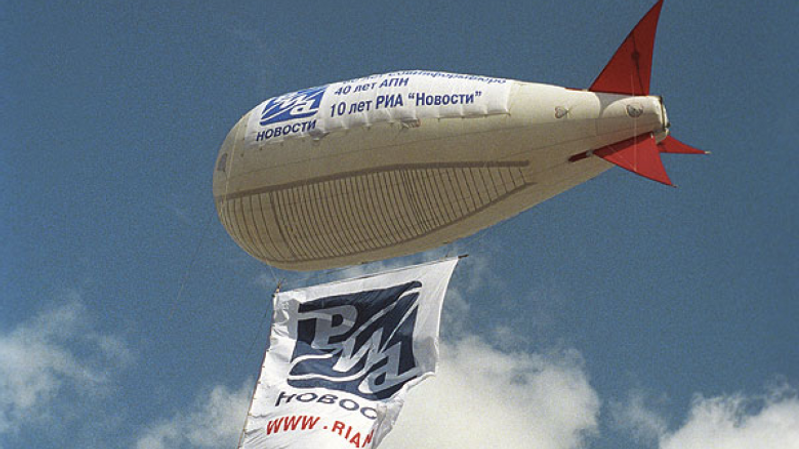
An air balloon launched in honor of a triple anniversary: 60 years of the Soviet Information Bureau, 40 years of the Novosti Press Agency and 10 yearsof RIA Novosti. 2001
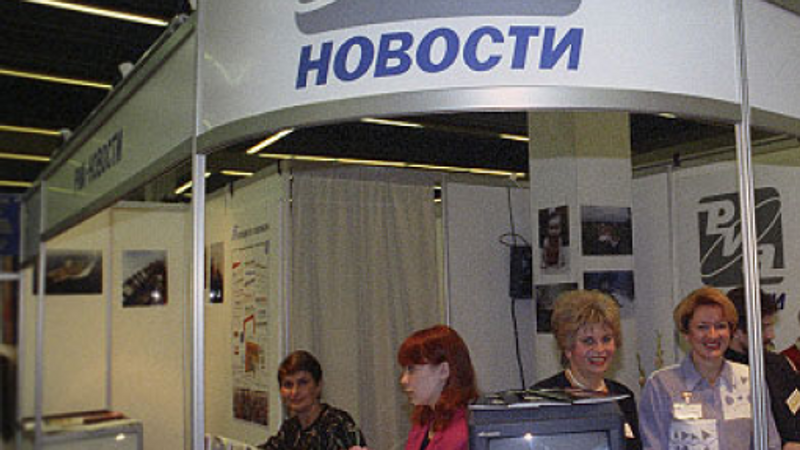
A RIA Novosti stand at the Press-96 exhibition at the National Exhibition Center. 1996
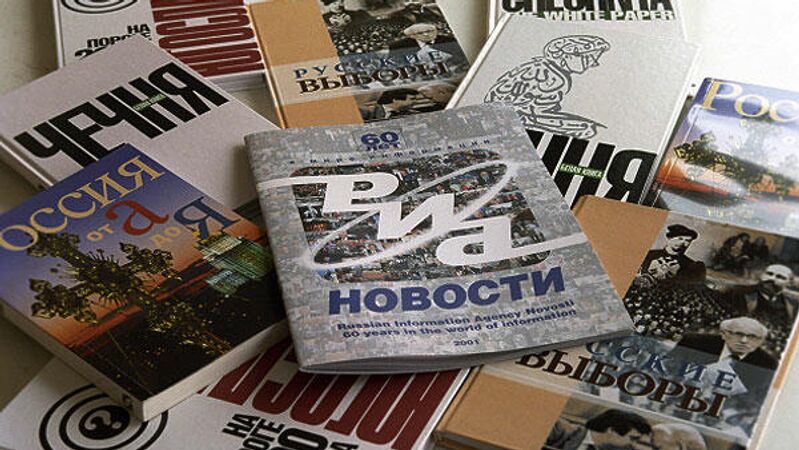
RIA Novosti printed products. 2001
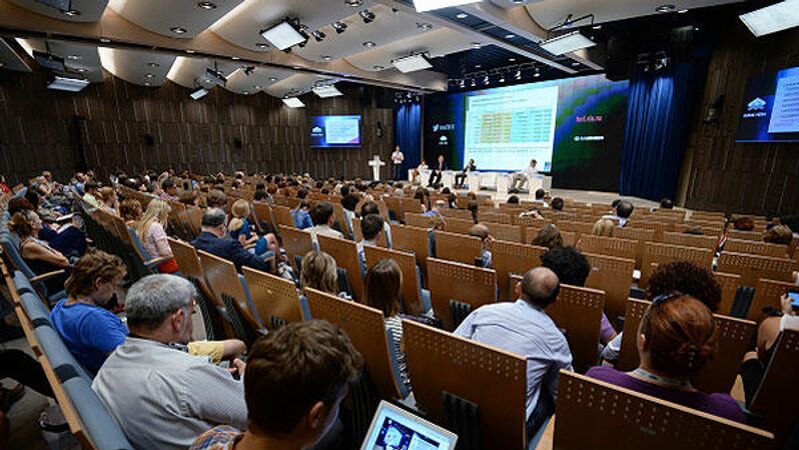
The Future Media Forum at RIA Novosti
Rossiya Segodnya International Media Group was established on December 9, 2013, by merging RIA Novosti news agency and Voice of Russia radio. In November 2014, the media group launched Sputnik international news agency and radio.
Rossiya Segodnya media group offers newsfeeds in Russian, English, Arabic, Spanish, Chinese and Farsi, as well as websites in 32 languages, and radio broadcasting in 19 countries. It runs 16 multimedia press centers around the world and its own AR and VR journalism studio; produces and distributes photo content and infographics; and creates information products for social media as well as mobile app content.
Alongside the news agencies RIA Novosti and Sputnik, Rossiya Segodnya media group includes online resources such as RIA Novosti Sport, RIA Novosti Realty and InoSMI, the economic news agency PRIME, the websites Ukraina.ru and Baltnews, the multiplatform media outlet TOK, and the Social Navigator and Arctic.ru projects.
The media group has firmly established itself as a leader in Russia and abroad, steadily expanding its geographic reach, developing its network of representative offices and offering content in the latest formats. The media group’s rich traditions and unique creative and professional resources are its primary asset.
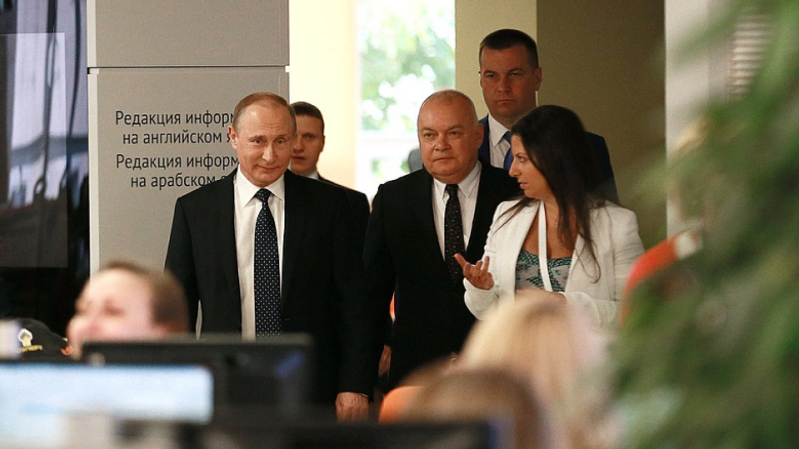
Russian President Vladimir Putin visits Rossiya Segodnya. From right: Rossiya Segodnya Editor-in-Chief Margarita Simonyan and Rossiya Segodnya Director General Dmitry Kiselev. 2016
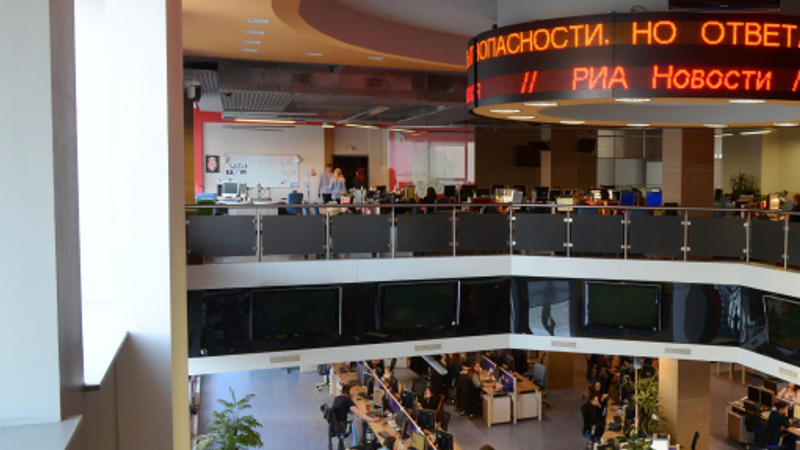
Newsroom at the Rossiya Segodnya International Media Group

Russian President Vladimir Putin speaks at the New Era of Journalism: Farewell to theMainstream international media forum at the Rossiya Segodnya International Multimedia Press Center. 2016
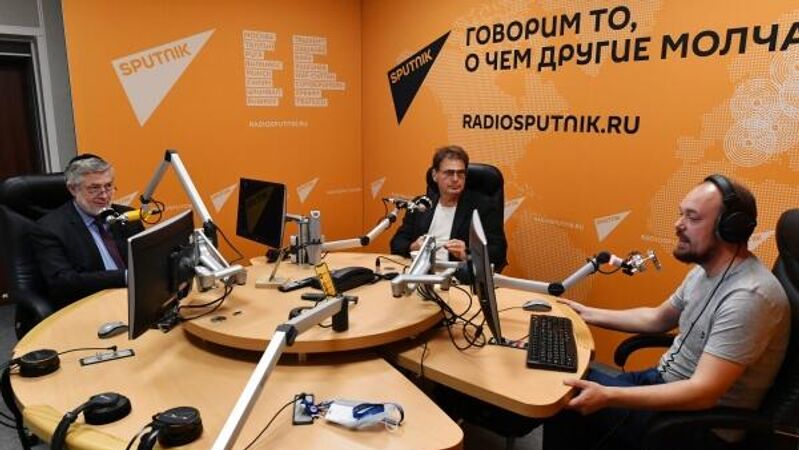
Israeli publicist and public figure Avigdor Eskin (left) and journalist Yevgeny Dodolev (center) in the Sputnik radio studio. Mikhail Voskresensky / RIA Novosti
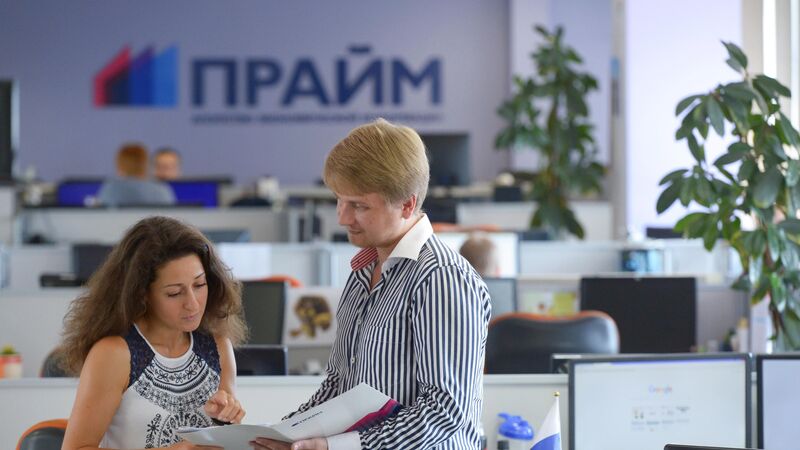
Employees of the Prime Business News Agency in the office. Vladimir Trefilov / RIA Novosti
Rossiya Segodnya International Media Group is headquartered at 4 Zubovsky Boulevard in Moscow, originally built for the 1980 Moscow Olympics.
A total of 99 sporting and other facilities were erected in Moscow in the run-up to the biggest athletic competition in the world. One of them was the Main Press Center, the headquarters of the press corps accredited at the 22nd Olympic Games.
Construction of the new six-story, 30,000 square meter building in the center of Moscow, at 4 Zubovsky Boulevard, began in May 1976.
At that time, the Novosti Press Agency (APN) editorial office was housed on Strastnoi Boulevard. The building was cramped and could not accommodate modern equipment. As APN veterans recall, the agency’s management asked the authorities to build a new headquarters, which would be transferred to APN after the Olympics, in exchange for providing information support during the event, such as operating the main press center. The APN proposal was approved, and a location was chosen next to a historical landmark, the old Provision Warehouses near Krymsky Bridge.
The Main Press Center opened shortly before the 1980 Olympic Games. APN honored its commitments to the organizing committee in full, and after the Olympics the Novosti Press Agency moved into the new building, along with the Union of Journalists of the Soviet Union and the Foreign Ministry Press Department.
In the late 1990s, President Boris Yeltsin signed an executive order transferring the premises to the successors of those organizations, with the formal agreement signed on March 20, 1998. Since then, the Union of Journalists of Russia (formerly the Union of Journalists of the Soviet Union) has occupied offices in the left wing of the building. The main part of the building was the headquarters of RIA Novosti, and is now home to Rossiya Segodnya International Media Group.
Today, the building boasts one of the biggest media facades in Moscow, broadcasting top news stories from the media group’s publications, quotes from experts, and the latest photos. Along with media offices, the building houses the Rossiya Segodnya International Multimedia Press Center, one of the most widely used and technologically advanced venues of its kind in Russia and the CIS.
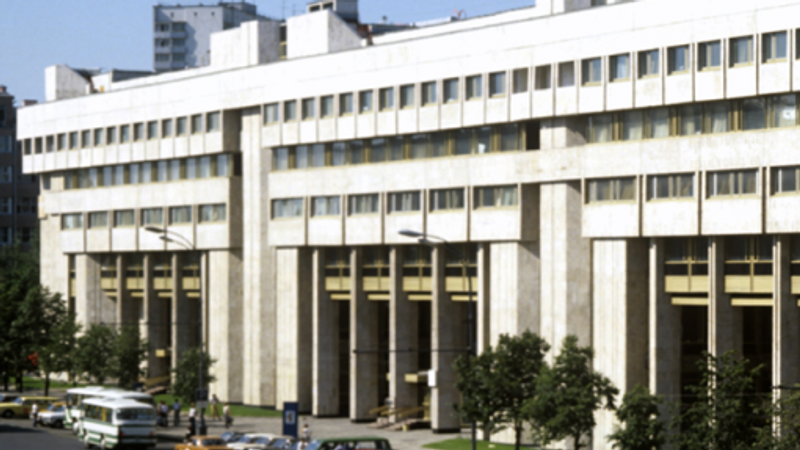
The Rossiya Segodnya building in Zubovsky Boulevard in Moscow.
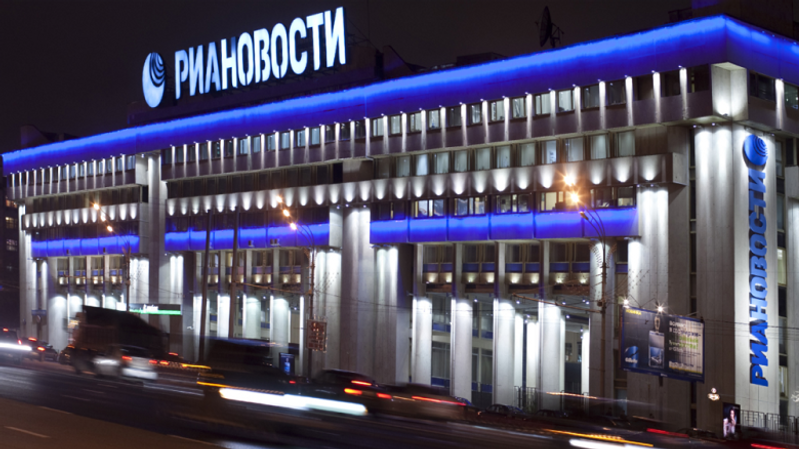
Russian International News Agency (RIA Novosti) building at 4, Zubovsky Boulevard, Moscow.
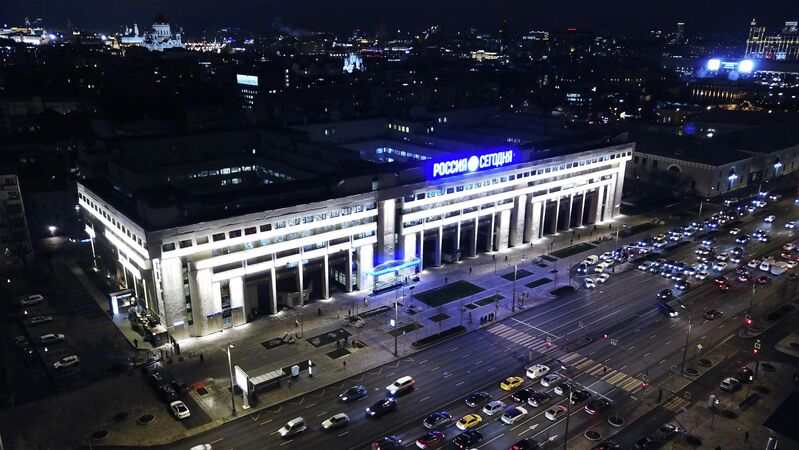
The building of Rossiya Segodnya after the reconstruction of the Garden Ring as part of the My Street project.
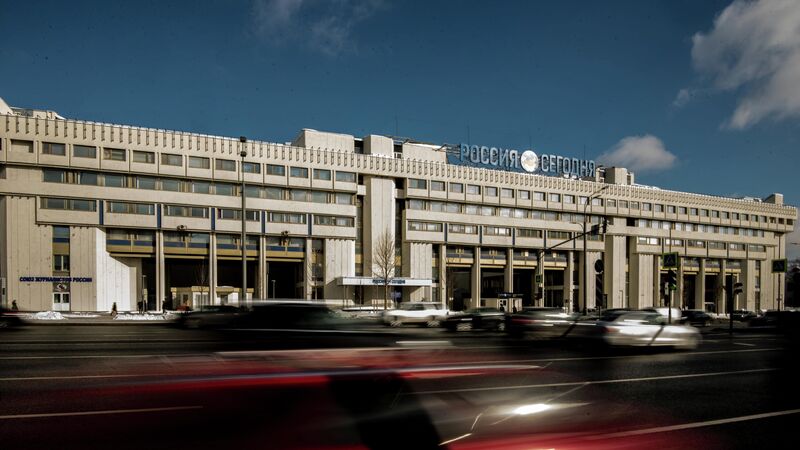
The Rossiya Segodnya building in Zubovsky Boulevard in Moscow.